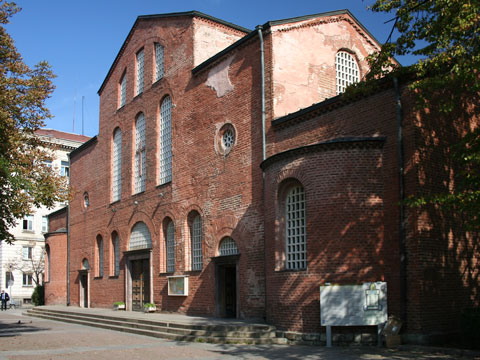 Sveta Sofia Church is one of the symbols of the city of Sofia, to which it lent its name back in the 14th century. The church is the second-oldest in the capital of Bulgaria, following the Rotunda of Saint George. It is located at Alexander Nevsky Square in the city centre, very close to Alexander Nevsky Cathedral.
Sveta Sofia Church is one of the symbols of the city of Sofia, to which it lent its name back in the 14th century. The church is the second-oldest in the capital of Bulgaria, following the Rotunda of Saint George. It is located at Alexander Nevsky Square in the city centre, very close to Alexander Nevsky Cathedral.
Sveta Sofia (sometimes referred to as “Hagia Sophia”, meaning “holy wisdom”) was built on the site of several earlier churches and places of worship dating back to the 2nd century AD, when it was the location of a Roman theatre.
The present building, most recently renovated ten years ago, is a cross-shaped basilica with three altars, a narthex and an apse. The church, with its two east towers and one tower-cupola, is believed to be the fifth structure to be constructed on the site; it was built during the reign of Byzantine Emperor Justinian I in the middle of the 6th century. During the Second Bulgarian Empire (1185-1396), the structure acquired the status of a metropolitan church. During Ottoman rule (15th to 19th century), the church was converted to a mosque and two minarets were added. The original 12th-century frescoes were destroyed during that era.
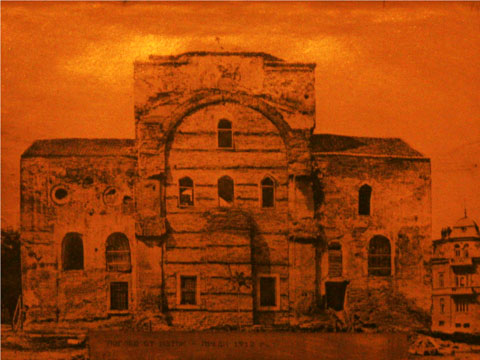 Over the centuries, the church has suffered several earthquakes. The one in 1858 destroyed the narthex and one of the minarets. The Ottoman Turks took that as a bad omen and the structure was abandoned. Yet the church survived to see better times – restoration started in 1900 and it was opened for congregations in 1930. In 1955, together with theRotunda of Saint George, the church was listed as a cultural monument. It underwent complete renovation in 1998 – 2001. It has been said that Sveta Sofia is the oldest operating Christian church in the world.
Over the centuries, the church has suffered several earthquakes. The one in 1858 destroyed the narthex and one of the minarets. The Ottoman Turks took that as a bad omen and the structure was abandoned. Yet the church survived to see better times – restoration started in 1900 and it was opened for congregations in 1930. In 1955, together with theRotunda of Saint George, the church was listed as a cultural monument. It underwent complete renovation in 1998 – 2001. It has been said that Sveta Sofia is the oldest operating Christian church in the world.
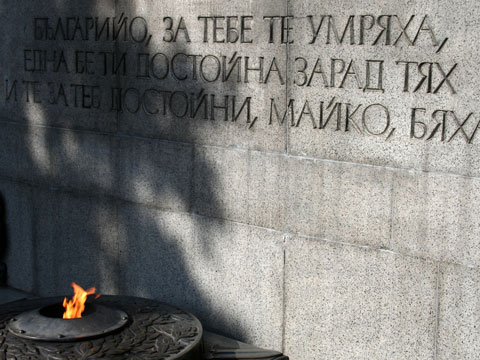 On the south side of the church is located the Memorial to the Unknown Soldier. Land from the for corners of Bulgaria – Moesia, Thrace, Dobrudja and Macedonia – was collected for this symbolical tomb; an eternal flame burns to honour and to give tribute to all of those who have died in combat for Bulgaria. Behind Sveta Sofia Church is the place where the great Bulgarian writer and poet Ivan Vazov is buried.
On the south side of the church is located the Memorial to the Unknown Soldier. Land from the for corners of Bulgaria – Moesia, Thrace, Dobrudja and Macedonia – was collected for this symbolical tomb; an eternal flame burns to honour and to give tribute to all of those who have died in combat for Bulgaria. Behind Sveta Sofia Church is the place where the great Bulgarian writer and poet Ivan Vazov is buried.
Facts:
* The present church does not have a belfry – the bell hangs on a century-old tree in front of the structure. It remains there as a sign of recognition for the Russian Army, which liberated Bulgaria from the Ottoman Empire in 1877 / 1878. On 4 January 1878, a church service of thanksgiving was performed here for the Russian army-liberator and, at that time, the bell was hung from the tree.
* For a short amount of time at the end of 19th century, the church was used as a watchtower for the first Sofia Fire Brigade.
* Part of the original 6th-century mosaic floor has been preserved in several spots in the church, with other segments being displayed at the National Archaeological Museum.
* There are more than a hundred ancient tombs underneath the church; their restoration is forthcoming.
* One legend says that the church was founded by a princess named Sophia, a relative of the Emperor Constantine the Great, who came to Serdika (now the city of Sofia) to seek healing in the local mineral water springs, and then stayed to live.
* Saint Sophia represents divine wisdom – there are icons within the church show the holy mother Sophia with her three daughters – Faith, Hope and Love.


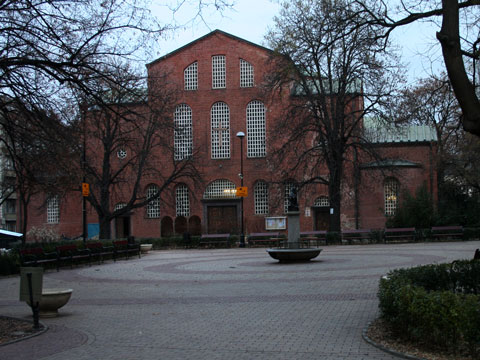


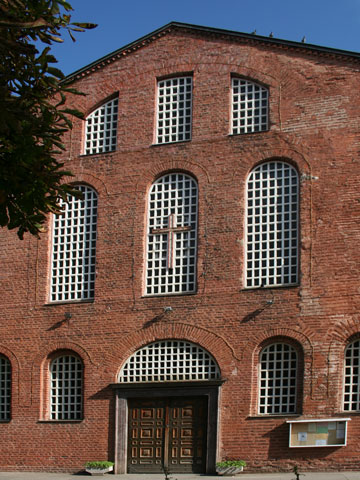




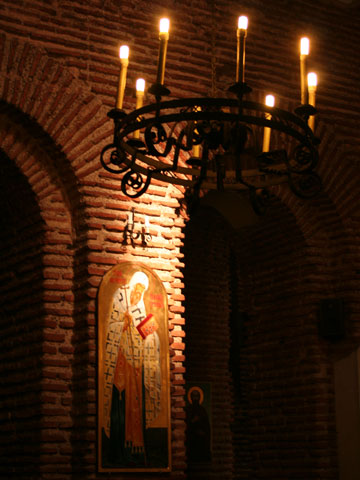
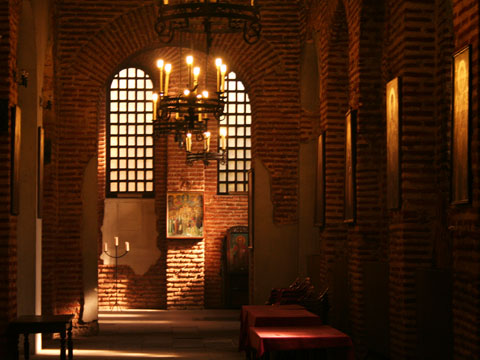

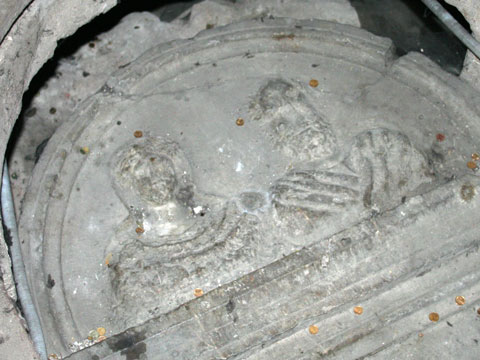

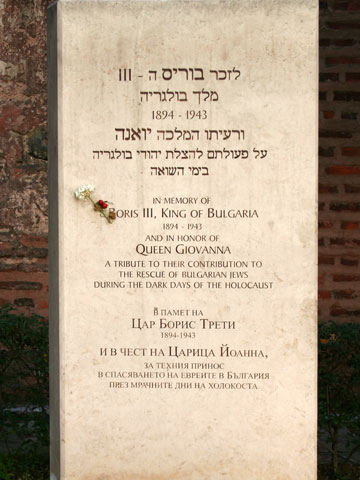
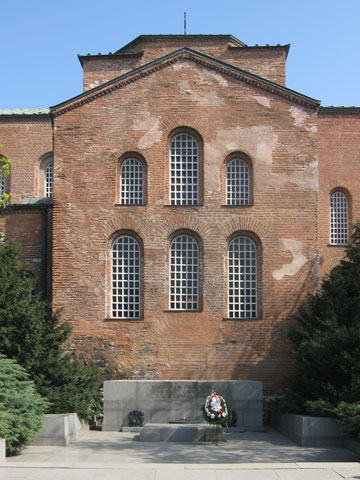
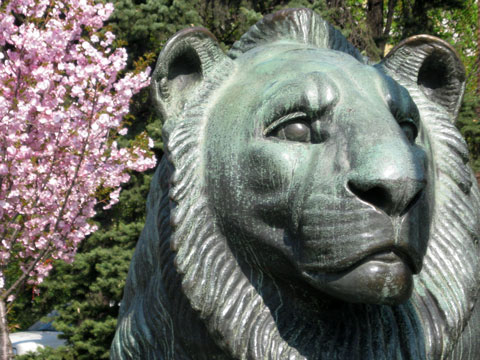
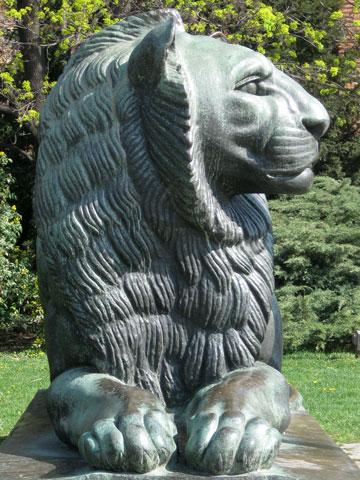


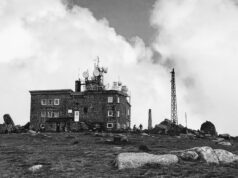
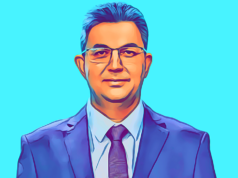
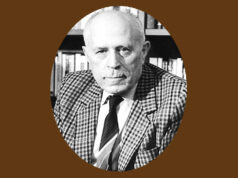

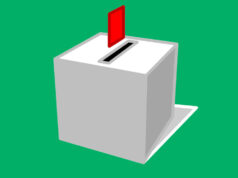

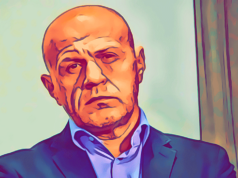


[…] actual namesake of the city, had no bell to ring when Sofia was freed. So an enterprising parson ran one up the tree and there it remains to this day (the bell is the same bell as in 1878. But the tree is […]